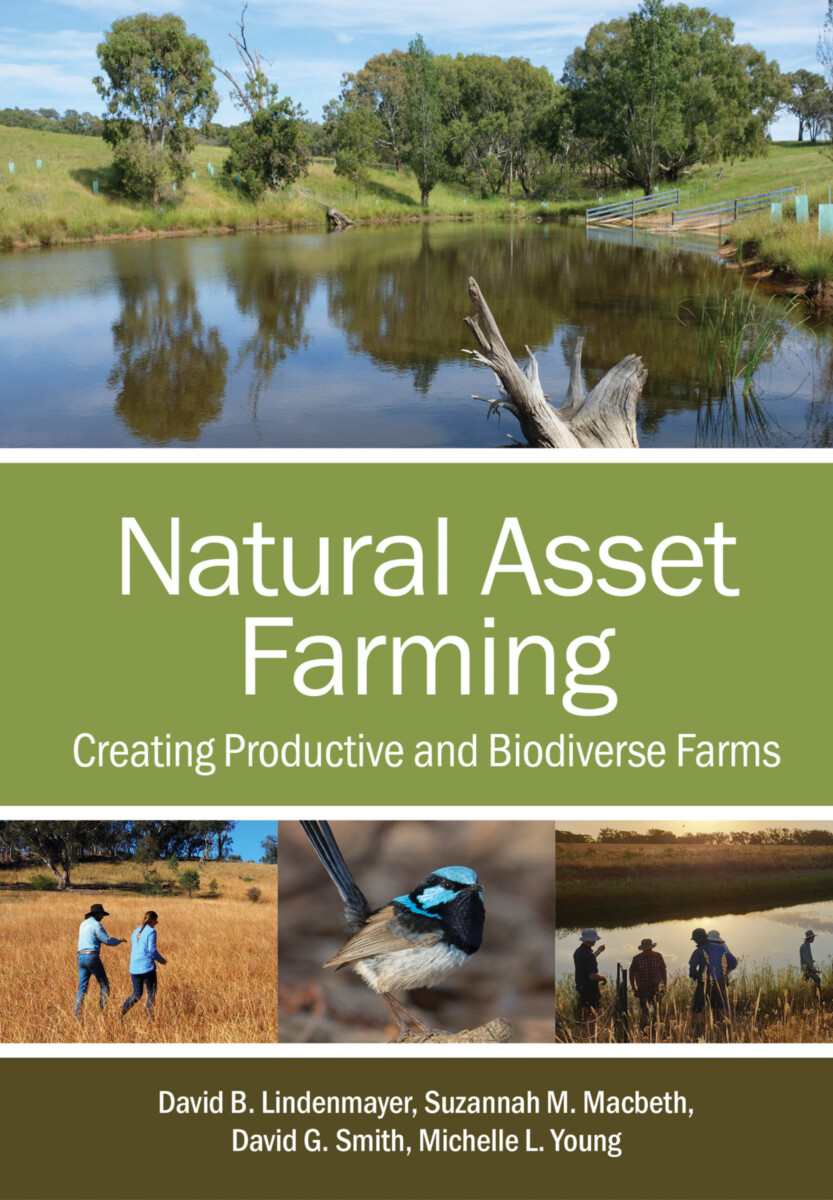EXCELLENCE IN SCIENCE PUBLISHING
Natural Asset Farming
Creating Productive and Biodiverse Farms
- Publisher
CSIRO Publishing - Published
31st May 2022 - ISBN 9781486314836
- Language English
- Pages 204 pp.
- Size 6" x 9"
- Images color illus, color photos throughout
Farm dams, creeklines, vegetation and rocky outcrops are natural assets that are essential for healthy, sustainable farms. Protecting and enhancing these elements of natural capital on farms not only supports biodiversity, but also contributes to farm productivity and to the well-being of farmers and farming communities.
Natural Asset Farming: Creating Productive and Biodiverse Farms reveals seven key natural assets and why they are so valuable for biodiversity and productivity on farms. Drawing on two decades of long-term ecological monitoring and knowledge exchange with farmers, landcare groups, and natural resource management experts, this book is a tool for building and enhancing natural assets in agricultural landscapes. In bringing together ecological science and the experience of farmers in the wheat–sheep belt of south-eastern Australia, Natural Asset Farming will help foster ideas, boost resilience, and improve the sustainability of agricultural production.
Features:
- Shows why protecting and enhancing natural assets can be a fantastic investment for a farm, delivering biodiversity, productivity, and well-being benefits
- Includes insights and experience from farmers who have undertaken natural asset management actions
- Explores the science of managing natural assets on farms
- Provides principles on how to manage natural assets on farms
- Includes images that show the key features of an enhanced natural asset.
About the authors
List of contributors
Acknowledgements
Introduction: Natural asset management on farms
1: Planning changes that make a difference
2: Enhance farm dams
3: Establish shelterbelts and other plantings
4: Protect remnant woodland
5: Protect creeks, wetlands and riparian zones
6: Protect paddock trees and grow new ones
7: Maintain native perennial grasses
8: Protect rocky outcrops
9: Manage feral animals and overabundant native species
10: Planning work to improve the natural assets on a farm
Appendix A: Plant lists for farm dam revegetation
Appendix B: Plant lists for supporting pollinators on farms
Index
David B. Lindenmayer
Professor David B. Lindenmayer AO has worked as a researcher on Australian farms for more than 23 years. He has a particular interest in improving environmental conditions on farm properties, including protecting remnant native vegetation as well as restoring and replanting it. He specializes in establishing and maintaining ecological large-scale, long-term research and monitoring programs on farms. He has co-authored a number of other books, including Natural Asset Farming and Restoring Farm Woodlands for Wildlife.
Suzannah M. Macbeth
Suzannah M. Macbeth is a writer with a background in conservation, communications, and the creative arts. She manages communications and engagement for the Sustainable Farms project, based in Canberra. She has worked in rangelands conservation, campaigning and advocacy, digital media and in the university sector. Suzannah grew up by the ocean in Western Australia and has strong roots in farming landscapes in East Gippsland, Victoria. She acknowledges and pays her respects to the Nyoongar, Gunaikurnai and Ngunnawal Traditional Owners of the lands she calls home.
David G. Smith
David G. Smith is a research ecologist with the Conservation and Landscape Ecology Group at The Australian National University, working on the Sustainable Farms project. David manages biodiversity monitoring projects in the Western Murray region of NSW and north-east Victoria. David's research background includes extensive work with reptiles, mammals and birds across Australia, and he has a particular interest in avian biology and ecology. David contributes to several projects outside of the woodlands, including bird and mammal research in Victoria's central highlands and mammal reintroductions and broader biodiversity monitoring and research in Booderee National Park.
Michelle L. Young
Michelle L. Young is Sustainable Farms' Project Director, and is a social scientist who has worked on a range of research and evaluation projects in agriculture, the environment, and public health. Her experience includes undertaking the evaluation of the social and economic impacts of the Murray Darling Basin Plan, supply chain studies looking at grain storage and kangaroo meat. Michelle also led several studies documenting the effectiveness of health promotion interventions in a range of settings, including maternal health, mental health, and accident prevention.


